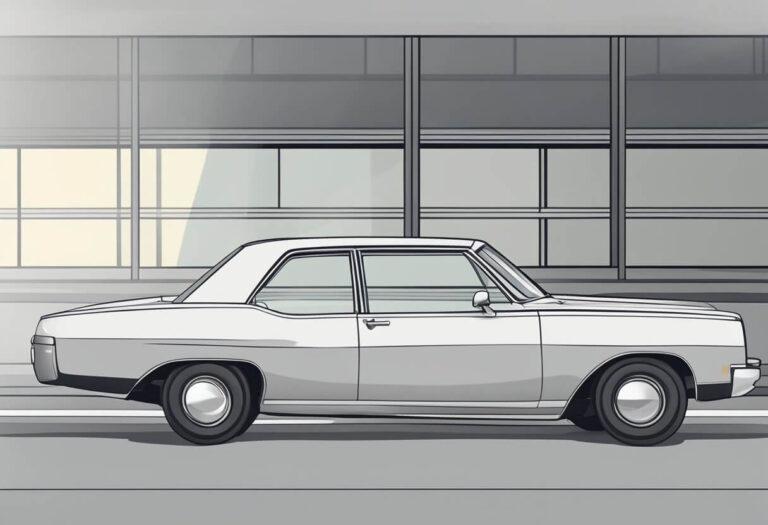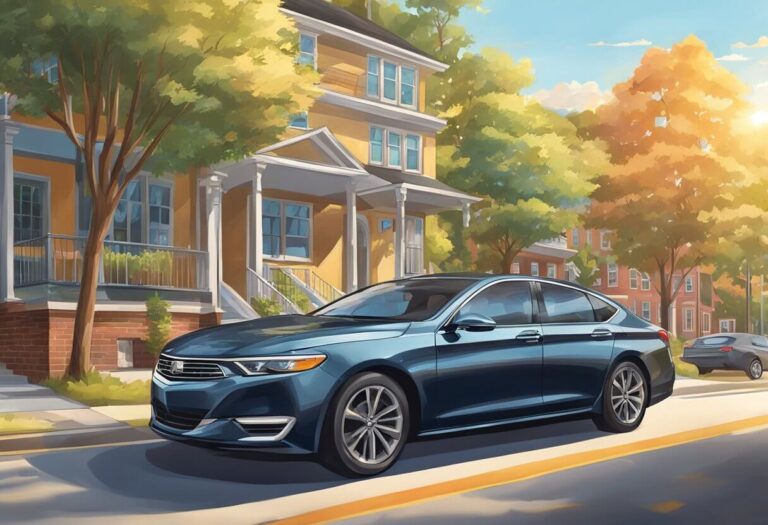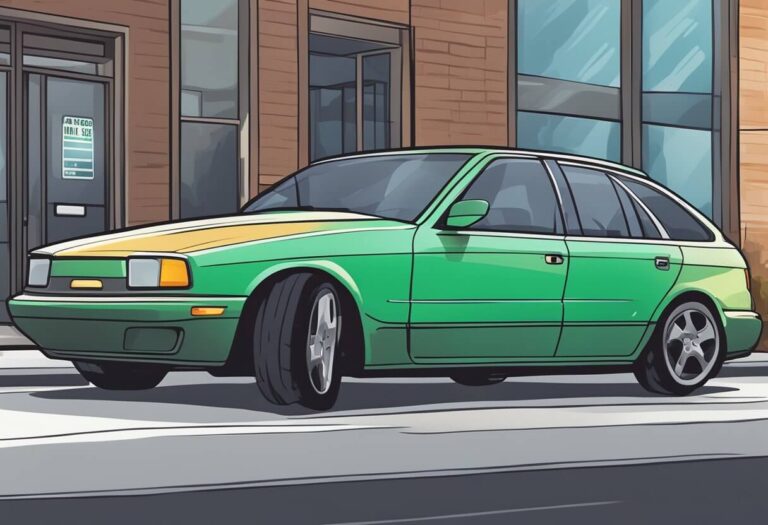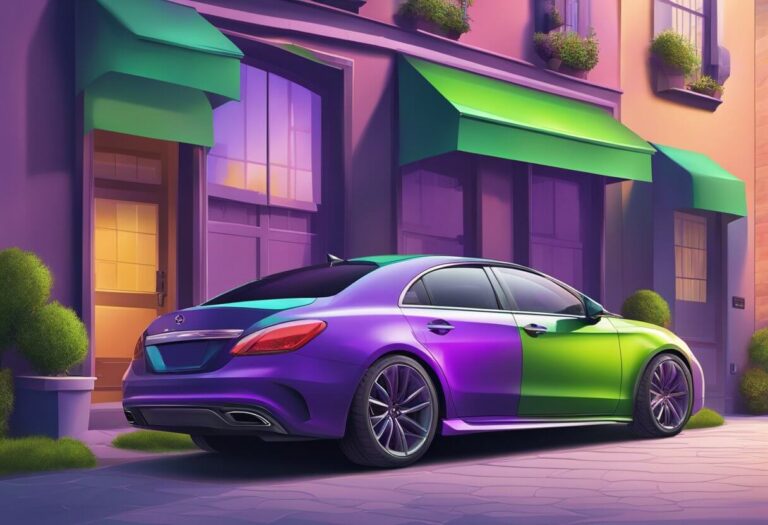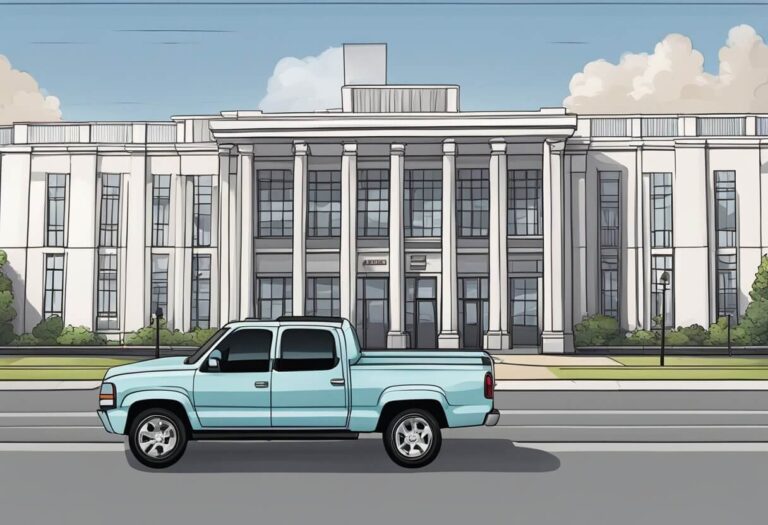Is 20% Window Tint Legal in Alabama? A Clear Answer
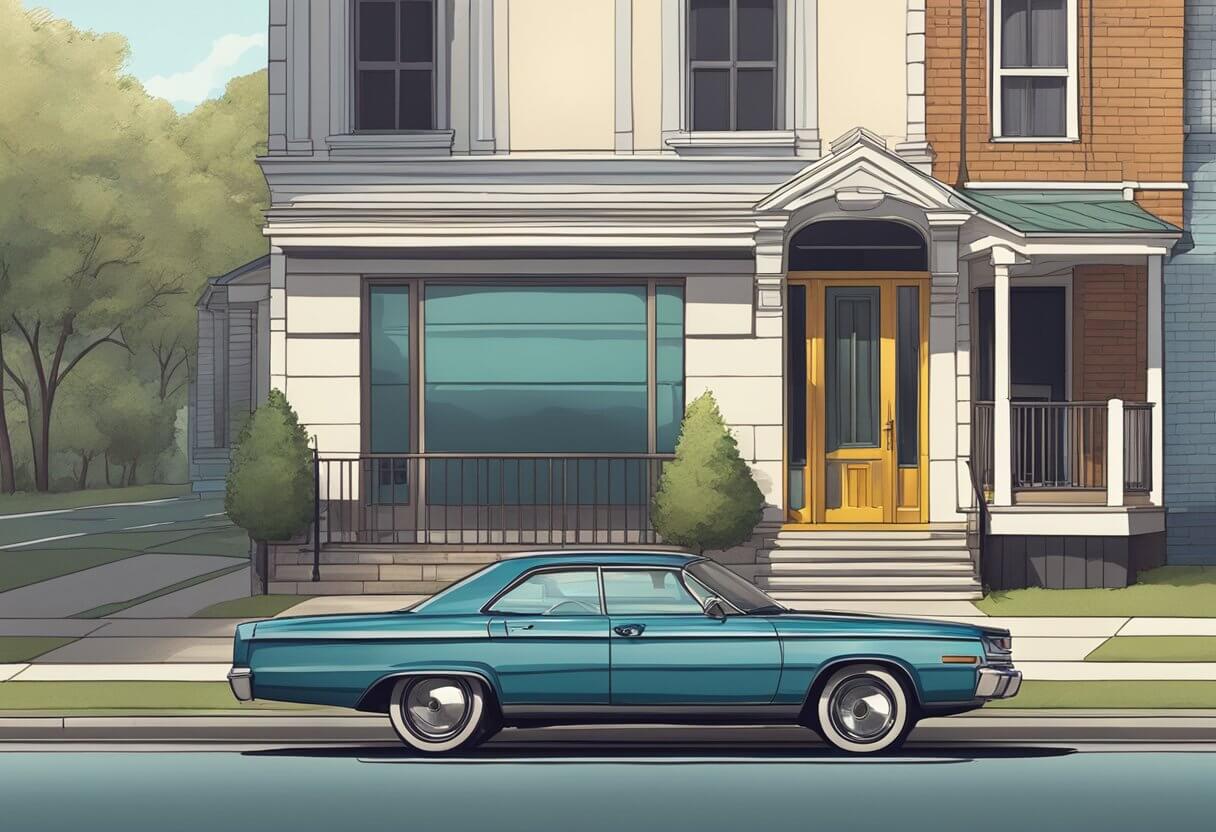
Is 20% window tint legal in Alabama? It’s a common question for car owners looking to tint their vehicle’s windows. Tinted windows offer privacy, reduce glare and heat inside the car, and provide protection from harmful UV rays. However, each state has its own regulations on how dark the window tint can be.
In this comprehensive guide, we’ll explore Alabama’s window tint laws and determine if a 20% visible light transmission (VLT) tint is allowed. We’ll cover the rules for different vehicle types, special exceptions, penalties for violations, and how to ensure your tint is legal. Whether you’re a lifelong Alabama resident or new to the state, understanding these laws is crucial to avoid fines and potential legal troubles.
What is Window Tint and VLT (Visible Light Transmission)?
Before diving into Alabama’s tint laws, it’s essential to understand window tint and visible light transmission (VLT). Window tint refers to the thin film applied to a vehicle’s glass, reducing the amount of light and heat that passes through.
VLT is a measure of how much visible light can pass through the combination of the window glass and the tint film. It’s expressed as a percentage, with lower numbers indicating a darker tint. For example, a 20% VLT tint means only 20% of visible light can pass through the window, while an 80% VLT tint is much lighter.
People often choose to tint their car windows for various reasons, including:
- Privacy: Darker tints make it harder to see inside the vehicle, providing more privacy for passengers.
- Heat Reduction: Tinted windows can block a significant amount of solar heat, keeping the interior cooler and reducing the need for air conditioning.
- UV Protection: Window tint films can block up to 99% of harmful UV rays, protecting passengers and the vehicle’s interior from sun damage.
Alabama Window Tint Laws for Passenger Vehicles
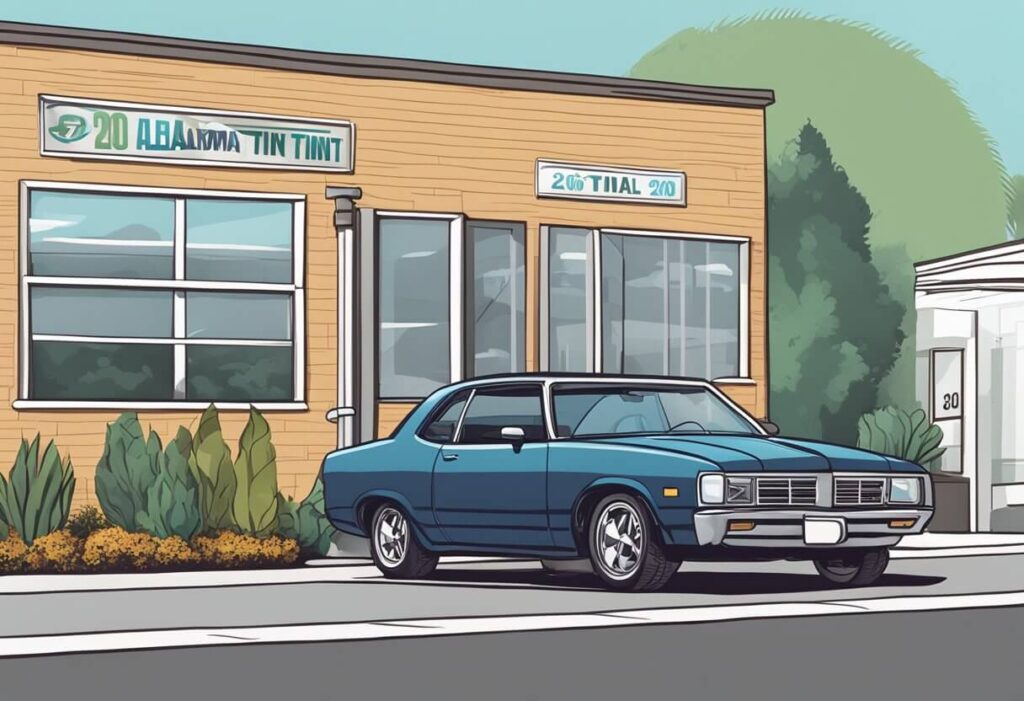
In Alabama, the window tint laws vary depending on the type of vehicle. For passenger vehicles, such as sedans and coupes, the following rules apply:
Windshield Tinting
Only the top 6 inches of the windshield can be tinted, and the tint material must be transparent (non-reflective).
Front Side Windows
The front side windows (driver and passenger) must allow more than 32% of light to pass through, with a tolerance of +/- 3%. This means the minimum legal VLT for front side windows is 29%.
Rear Side and Rear Windows
Like the front side windows, the rear side windows and rear windshield must also allow more than 32% VLT, with the same 3% tolerance.
Alabama Window Tint Laws for Multi-Purpose Vehicles (SUVs, Vans)
Multi-purpose vehicles, including SUVs, minivans, and vans, have slightly different window tint regulations in Alabama:
Windshield Tinting
The same rules apply as passenger vehicles – only the top 6 inches can be tinted with a transparent material.
Front Side Windows
The front side windows must also comply with the 32% VLT minimum, allowing more than 32% of light transmission.
Rear Side and Rear Windows
Here’s where the regulations differ. For the rear side windows and rear windshield of multi-purpose vehicles, Alabama allows any level of tint darkness. This means you can legally have a 20% VLT tint or even darker on the rear windows of your SUV, van, or other multi-purpose vehicle.
Is 20% Tint Too Dark for Alabama?
Based on the information above, a 20% VLT tint is generally too dark for the front side windows of any vehicle in Alabama. The state requires a minimum of 32% VLT (or 29% with the 3% tolerance) on front side windows, making a 20% tint illegal for those windows.
However, 20% tint is legal for the rear side windows and rear windshield of multi-purpose vehicles like SUVs and vans. Since Alabama law doesn’t specify a maximum tint darkness for these rear windows on multi-purpose vehicles, a 20% VLT tint is perfectly acceptable.
For passenger vehicles like sedans and coupes, a 20% tint would also be legal on the rear side windows and rear windshield, as those must meet the same 32% VLT minimum as the front side windows.
Window Tint Reflectivity Rules in Alabama
In addition to regulating tint darkness, Alabama also has rules regarding window tint reflectivity. Reflective tints can help reduce glare from the sun and oncoming headlights, making driving safer and more comfortable.
According to Alabama law, the reflective material used in window tints cannot reflect more than 20% of light for any window on the vehicle, regardless of its type. This applies to the front windshield, front side windows, rear side windows, and rear windshield.
Other Alabama Window Tint Regulations
Beyond the tint darkness and reflectivity rules, Alabama has a few additional regulations concerning window tinting:
Medical Exemptions: The state allows medical exemptions for special tint needs due to certain medical conditions. If you have a condition that requires darker tinting for protection, you can apply for an exemption with certification from your physician.
Tint Certification and Labeling: Window tint manufacturers must certify their films for use in Alabama. Additionally, all tinted windows must display a visible label or sticker indicating compliance with the state’s laws.
Colored Tints: Alabama does not explicitly ban any specific tint colors, meaning colored tints are generally allowed as long as they meet the VLT and reflectivity requirements.
Penalties for Illegal Window Tint in Alabama
Violating Alabama’s window tint laws can result in penalties ranging from fines to potential jail time, depending on the number of offenses:
- First Offense: A fine of up to $100, up to 10 days in jail, or both.
- Second Offense (within 1 year): A fine of up to $200, up to 30 days in jail, or both.
- Third or Subsequent Offense (within 1 year): A fine of up to $500, up to 3 months in jail, or both.
It’s crucial to ensure your vehicle’s window tint complies with Alabama’s regulations to avoid these penalties. Law enforcement officers can use a special device to measure the VLT of your tinted windows and issue citations for illegal tints.
How to Get Legal 20% Tint in Alabama
If you own a multi-purpose vehicle like an SUV or van in Alabama, you can legally install a 20% VLT tint on the rear side windows and rear windshield. However, it’s essential to have the tint installed by a reputable professional who understands Alabama’s laws and uses certified tint films.
For passenger vehicles like sedans and coupes, a 20% tint is generally not legal for the front side windows. However, you can still have a 20% tint installed on the rear side windows and rear windshield, as long as it meets the 32% VLT minimum requirement.
Conclusion
In summary, a 20% window tint is legal in Alabama only for the rear side windows and rear windshield of multi-purpose vehicles like SUVs and vans. For passenger vehicles and the front side windows of any vehicle, Alabama requires a minimum of 32% VLT (or 29% with the 3% tolerance), making a 20% tint too dark and illegal.
Understanding and complying with Alabama’s window tint laws is crucial to avoid potential fines and legal troubles. If you’re unsure about the legality of your vehicle’s tint or want to have new tint installed, it’s best to consult with a professional tint installation company familiar with the state’s regulations.
Remember, tinted windows not only enhance your vehicle’s appearance but also provide practical benefits like privacy, heat reduction, and UV protection. By following Alabama’s laws, you can enjoy these benefits while staying on the right side of the law.

